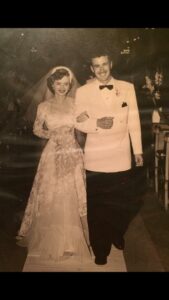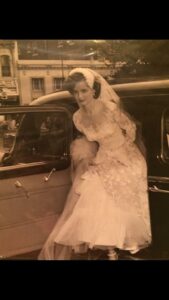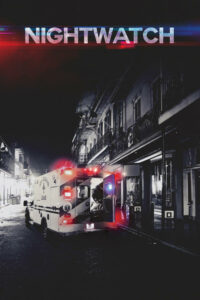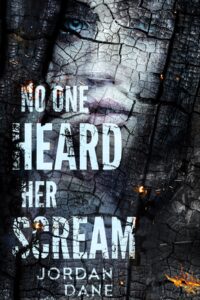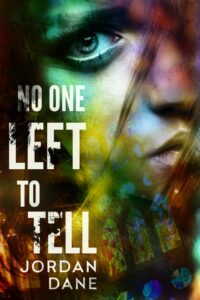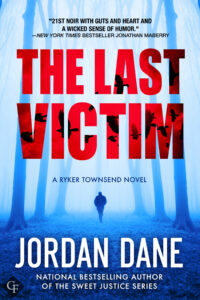Jordan Dane
@JordanDane

Wikimedia Commons public image – S Korea interrogation cell
We have an intrepid author willing to submit the first 400 words of their latest project RELENTLESS for critique. Gutsy. I’ll have my feedback on the flip side. Please add your comments/constructive criticism to help this author.
***
I was seated in a faded leather armchair but couldn’t move. Nothing below the shoulders worked. I was able to turn my head from side to side. That was all. The sensation brought back a memory from twenty years ago when I was an eleven year old girl and fell out of that elm tree. The impact on the ground knocked the wind out of me. I was afraid. Back then the fear was temporary. This was different.
The room was stark, blacks and whites. Sharp edges on furniture, sun-bleached fabric on the one couch. A window was open. Cold air poured in. I heard waves pound against rocks at a distance. I took a deep breath, I wasn’t stressed. My practice of daily meditation born of my Buddhist belief kicked in. I remained calm, focused.
A solid dull brown door creaked open and he walked in. He was maybe five feet five inches, stocky build poured into a three-piece suit, vest and all the trimmings.
He carried a single manila folder, walked in front of me and sat on the edge of a scarred leather topped captains desk. His eyes were set close to a narrow nose, the only hair on his head was a tight goatee, closely groomed. He dropped the folder on the desk and crossed his arms. A small puff of air expelled through soft nostrils. He was Vietnamese. Some of that blood ran through me. I knew his essence.
He stared at me and smiled. “The resemblance is uncanny. Truly remarkable,” he said in a voice that sounded like he was telling me a bed-time story. “I must apologize for the inconvenience.”
My eyes were glued to his face. Not a muscle twitched. His or mine.
He dropped his arms, braced them on the desk with his hands. “Your name is Alice Weathers.”
“Yes,” I said.
“You teach second grade.”
“Yes.”
“I am curious. You did not have a purse with you.”
“It was in the trunk of my car. I didn’t need anything so I left it.”
“It’s of no matter. Fingerprints and blood type have provided your identity. A verification procedure to have been conducted regardless of personal identification.”
“What’s this about?”
“Miss Weathers, the drug that was administered affects your upper and lower muscles. It will wear off in modest time and you shall be fully restored. You have nothing to fear. Where is it you teach second grade?”
“Orange Unified.”
“That is correct. But you were seen leaving the Skyline Tower office building today. Why were you there?”
FEEDBACK
OVERVIEW
There is a great deal to like about this submission. I really liked that the author stuck to the action and didn’t stray too far. I will suggest some clean up on the front end, but I would definitely keep reading to find out the mystery of why this woman has been drugged and interrogated.
There’s also palpable tension between Alice Weathers and her interrogator. Cagey dialogue. The author makes us care what happens to Alice, a teacher.
With the first person POV, the author quickly established the prisoner is a woman in the first paragraph and doesn’t make the reader have to guess.
I also like the quick dialogue with minimal use of tags. It’s easy to follow and the minimalist approach adds to the tension. I also like that she’s cagey too in her replies. She only answers his questions with one word replies of “Yes.”
Some good lines that I particularly liked:
…stocky build poured into a three-piece suit, vest and all the trimmings.
Some of that blood ran through me. I knew his essence. (In one simple line, the author cleverly gave insight into Alice, that she was Vietnamese, thereby raising the mystery of what’s going on.)
REALISM
I had to ask myself that if this were me, what would I want to know from my interrogator. Alice is too calm. She’s seems like more than a teacher by her cagey replies and her disciplined mind, but I’m wondering if the tension might become more real if she asked her interrogator questions as he entered the room. Fiction and conflict could be ratcheted up if she’s more confrontational from the start. Focus on THAT before she very clinically describes the room. (The author doesn’t go too overboard with the descriptions, but when you imagine this written with more conflict, the intro could be more emotional and more real.)
“What did you give me? I can’t move.”
“You have no right to hold me. I’m an American.”
I also have to ask myself why the man would’ve drugged her. He could have hauled her into the interrogation room or facility (like in an arrest). What’s the purpose for the drug? I’m sure we will find this out soon (I hope), but it might be more authentic if Alice would question this first before she describes the room so clinically. We need to feel her internal panic, even if she doesn’t allow him to see her fear. The first few paragraphs are too calm for someone drugged and taken against her will.
HOUSEKEEPING
This is a pet peeve of mine but a line like this makes my mind imagine this literally.
My eyes were glued to his face.
Of course her eyes aren’t literally “glued” to his face, but nonetheless, my mind shifts to the imagery and pulls me from the story. The distraction can be avoided by rewording.
My gaze fixed on his face.
Using “eyes” can be tricky, but as I’m writing the line, I’ve trained myself to think of the sentence as literal to avoid an editor or a reader raising an eyebrow. You could also play with the lines to make the brief description feel more real.
He had my full attention. I couldn’t turn away. His eyes were riveting.
Other nitpicks from me:
I heard waves pound against rocks at a distance.
Alice hears the ocean from that open window, but she can’t know (by the mere sound of the water) that the waves are hitting rocks. I still loved this detail, but I fixed this in the rewrite below.
A small puff of air expelled through soft nostrils.
In this short description of the interrogator, Alice can’t know his nostrils are “soft” and unless she has super hearing, she isn’t likely to hear a small puff of air leave his nose.
LAYER THE MYSTERY
As nicely written as this piece is, there are ways to milk this first short scene for a mystery that readers will be intrigued to discover. Questions that come to mind are:
Is Alice innocent or does this interrogator have a reason to hold & question her?
He seems to know something about her, but what?
In this paragraph, the interrogator remarks about “the resemblance is uncanny.” See the line below:
He stared at me and smiled. “The resemblance is uncanny. Truly remarkable,” he said in a voice that sounded like he was telling me a bed-time story. “I must apologize for the inconvenience.”
Since we’re in Alice’s POV, what does she think about this? Without drawing something out of Alice – perhaps fear that this man truly knows something secretive about her – this is a missed opportunity for dropping breadcrumbs for lovers of mystery.
Alice could be shocked by his remark and try to not show it, but too late. Also the transition between his “resemblance is uncanny” line shifts too quickly to him apologizing for the inconvenience. The mystery is trampled over. The more important aspect of this exchange is the fact that he hints about knowing something about Alice. The apology is really not necessary in light of that.
He stared at me and smiled. “The resemblance is uncanny. Truly remarkable,” he said in a voice that sounded like he was telling me a bed-time story. “I must apologize for the inconvenience.”
REWRITE SUGGESTION
When the man smiled, chills skittered down my arms.
“The resemblance is uncanny. Truly remarkable.”
REACTION 1:
What the hell was he talking about? (internal thought for Alice, formatted in italics. She strains not to react.)
REACTION 2: Let the man deliver his line and savor Alice’s shock by punctuating his line with a chilling smile afterwards, not before.
“The resemblance is uncanny.”
When the man smiled, chills skittered down my arms. I didn’t want to react, but too late. I blinked. How much did he know?
TELLING vs SHOWING
Here are a few lines that are definitely TELLING, but because the submission is already well-written and the tension palpable, the TELLING isn’t needed and can be deleted. If you get the prose right, the “telling” lines should not be required.
I was afraid. (paragraph 1)
…I wasn’t stressed. (paragraph 2)
I remained calm, focused. (paragraph 2)
REWRITE SUGGESTION
The first few paragraphs that have Alice seated in a leather chair, seemingly paralyzed, are too focused on describing the details of the room. It reads like “author intrusion” when the writer is more concerned with setting than what might be going on in Alice’s head. By focusing on these details, it diminishes her fear and any real sense that she is in danger.
BEFORE:
I was seated in a faded leather armchair but couldn’t move. Nothing below the shoulders worked. I was able to turn my head from side to side. That was all. The sensation brought back a memory from twenty years ago when I was an eleven year old girl and fell out of that elm tree. The impact on the ground knocked the wind out of me. I was afraid. Back then the fear was temporary. This was different.
AFTER:
I couldn’t move. Nothing worked below my shoulders. I could only turn my head, but the heaviness of my arms and legs scared me. It reminded me of the time I fell out of a tree when I was eleven. I thought I’d broken my back and the horror of being paralyzed for life rushed back to me. I swallowed a gasp and my eyes burned with tears that blurred the room.
Where the hell was I?
Cold air poured in from an open window. I felt it on the skin of my face and I heard ocean waves pounding against a shoreline or a barrier wall. I strained to shift my gaze to take in the room, looking for clues of where I was. It felt important.
A stark austere room of blacks and whites. I sat in a worn leather chair. A sofa across from me had been sun bleached, but nothing looked familiar.
My body reacted to my dire situation. Beyond my head movements, my lungs could breathe. I took a deep breath and settled my heart, letting my Buddhist belief in meditation take over.
When the only door to the room creaked open, I flinched when a man walked in. A short stocky build poured into a three-piece suit, vest and all the trimmings.
He carried a single manila folder.
There are ways to shuffle the descriptions around to create more tension and make Alice’s situation more dire. Remember, the reader is in her head. The author’s job is to intrigue the reader that they must keep turning the pages. We are already squarely on Alice’s side in this well-written piece, but tweaking this introduction can bring out more. That’s where “layering for added emotion” and editing can make a real difference.
DISCUSSION:
I know you all have comments for this talented author. Fire away. Please give constructive criticism and/or encouragement.

